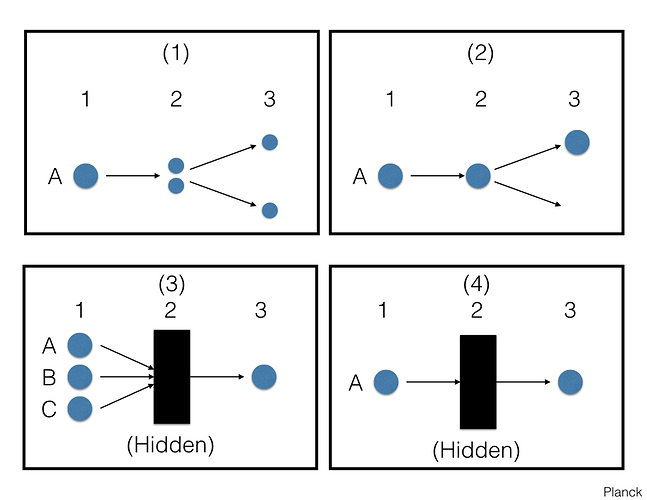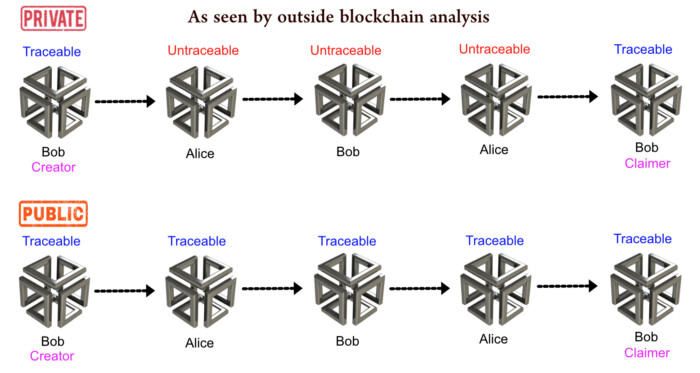I’m helping to design a series of experiments on the properties of blockchain objects, focusing on how and when they diverge from the properties of objects in the physical world. The first step is establishing a baseline for what the on-chain objects “do” at the appropriate level of abstraction, drawing inspiration from classic experiments in developmental psychology.
Here’s what we have so far:
- The Bitcoin model in which objects are broken up in utxos
- The NFT model in which an object is continuous but the ownership is transferred
- The non-blockchain OSI model in which objects (packets in this case) are exchangeable, sometimes lost, and arbitrarily routed.
- The sidechain (NFT) case in which an object disappears and reappears arbitrarily
I would appreciate any advice or thoughts on this— I don’t think that these are perfectly correct (particularly 4 and, perhaps, 2). And just to be clear, the point is to establish how and why the “digital scarcity” of a blockchain object might make it psychologically unique, given other properties. Then we will study interaction effects, permutations, etc.
I’ll post the results on here if there’s interest.

